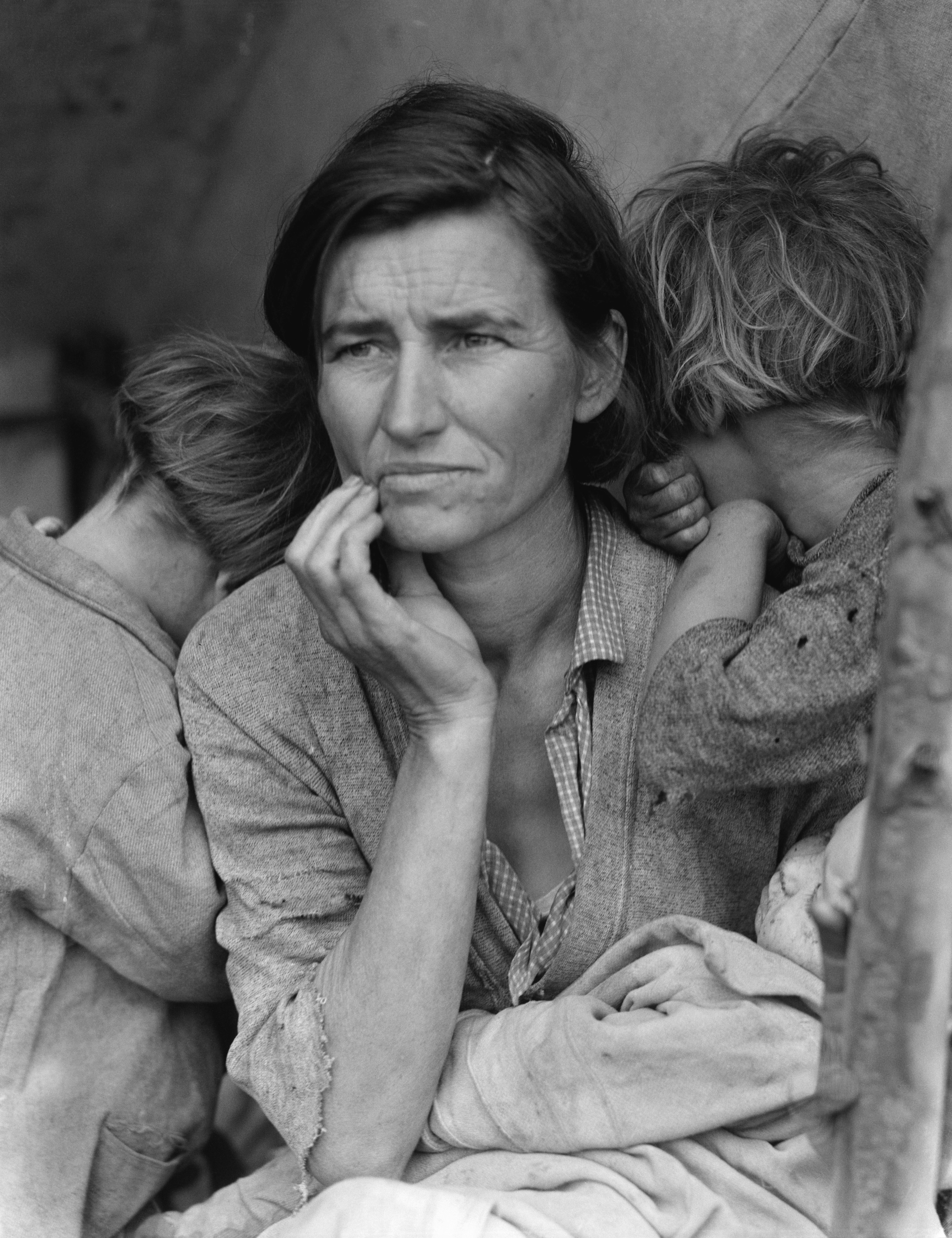Migrant Mother 1936 by Dorothea Lange 4x5" Library of Congress, Washington D.C
In this picture in black and white, we see four characters, a mother with her two children and one infant in her lap. What attracts at first our look is the mother's expression. She looks like she is lost in her thoughts, worried, preoccupied about something. Indeed, her eyes have an anxious look, they do not look like they are fixed anywhere in particular but more somewhere that us viewers cannot see but only imagine, the mother's mind. The multiple wrinkles on her face witness her worries, her lassitude too. In fact, she does not seem to be really old but her aspect let us believe that she has known hard times and that her life experience make her older than she is in reality. By her side, hiding their faces in her neck and crowling on her are two children, most likely hers. Both of them look like they could be resting or trying to be the closest they can to their mothers because they are scared.Their bodies's postions also express their tiredness. All the characters wear clothes which are worn out, dirty. One of the children's hand is really dirty and also the baby's face seems to be dusty, draker at some points as if tiny particles covered it, both of them standing out darker in the picture than most of the personnages' apparent skin. These elements tell us that their living conditions are probably mediocre. Also, we know that they are immigrants but the idea of them having traveled for a long time is confirmed by their global aspect: exhaustion, filthiness.
Dorothea Lange used to work for the Farmer Security Administration, documenting the impact of federal programs in improving rural conditions.It is while travelling to realize her work that she falls upon this woman and her children. Touched by her, she will take a few different shots of her and her family. Once back in San Francisco where she lived, she alerted a newspaper providing it with a couple of her shots. As a result, the government rushed to send food into the migrants' camp. Indeed, Dorothea Lange was not initially an artist and had not learnt to work in an art school but the impact of her work was beyond anything that anyone could have expected. Actually, I believe that when she spontaneously took these pictures she was hoping to help this people by claiming their needs through her photography. Indeed, the power of the pictures, the emotions they carry had an incredible effect on the population and the governement at that time. And still today, they remind us of what happened, faithly transmitting the history of these people.
You know there are moments such as these when time stands still and all you do is hold your breath and hope it will wait for you. And you just hope you have enough time to get it organized in af raction of a second on that tiny piece of sensitive film. Sometimes you have an inner sense that you have encompassed the thing generally. You know then that you are not taking anything away from anyone, their privacy, their dignity, their wholenes
Title: Instructional Resources: Migrant Mother by Dorothea Lange
Author(s): Dorothea Lange; Carole Henry
Source: Art Education, Vol. 48, No. 3, The Broader Context (May, 1995), pp. 25-28+37-40

No comments:
Post a Comment